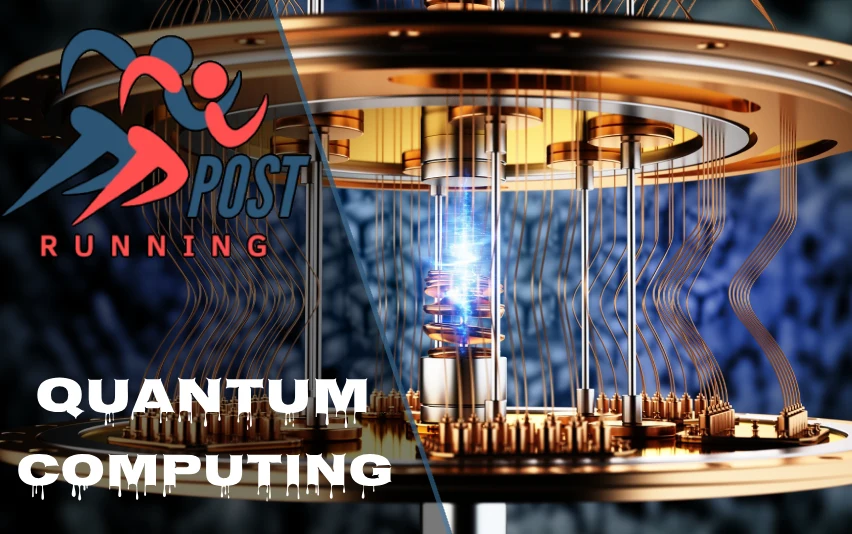Quantum computing is a cutting-edge technology that’s poised to revolutionize the world of computing as we know it. But what exactly is quantum computing, and why is it generating so much buzz in the tech world? Let’s dive into this fascinating field and explore its potential to transform various industries.
Introduction
Quantum computing is an advanced form of computing that harnesses the principles of quantum mechanics to process information. Unlike classical computers that use bits (0s and 1s) to store and process data, quantum computers use quantum bits, or qubits. These qubits can exist in multiple states simultaneously, allowing quantum computers to perform complex calculations at speeds that are unimaginable with traditional computers.
The importance of quantum computing in modern technology cannot be overstated. As we face increasingly complex problems in fields like cryptography, drug discovery, and climate modeling, quantum computing offers the potential to solve these challenges more efficiently than ever before. It’s not just an incremental improvement over classical computing; it’s a paradigm shift that could unlock new realms of scientific discovery and technological innovation.
What sets quantum computing apart from classical computing is its ability to leverage quantum mechanical phenomena like superposition and entanglement. These properties allow quantum computers to perform certain types of calculations exponentially faster than even the most powerful supercomputers we have today.
What is Quantum Computing?
At its core, quantum computing is a multidisciplinary field that combines principles from physics, mathematics, and computer science. It’s based on the strange and counterintuitive world of quantum mechanics, where particles can exist in multiple states at once and interact with each other in ways that defy classical physics.
The key to quantum computing lies in its use of quantum bits, or qubits. Unlike classical bits, which can only be in one of two states (0 or 1), qubits can exist in a superposition of states. This means they can be both 0 and 1 simultaneously, or any combination in between. It’s like having a coin that’s not just heads or tails, but spinning in the air, representing all possibilities at once.
Another crucial principle in quantum computing is entanglement. This phenomenon allows qubits to be interconnected in such a way that the state of one qubit instantly affects the state of another, regardless of the distance between them. Einstein famously called this “spooky action at a distance,” and it’s a key factor in the power of quantum computers.
The difference between classical bits and qubits is fundamental to understanding the potential of quantum computing. While a classical computer with n bits can represent 2^n states, a quantum computer with n qubits can represent 2^n states simultaneously. This exponential increase in processing power is what gives quantum computers their edge in solving certain types of problems.
How Does Quantum Computing Work?
To understand how quantum computing works, we need to delve a bit deeper into the concept of qubits and their unique properties. As mentioned earlier, qubits can exist in multiple states simultaneously, thanks to a quantum mechanical principle called superposition. This ability allows quantum computers to process vast amounts of information in parallel, potentially solving problems that would take classical computers millions of years to crack.
Superposition is like having a light switch that’s not just on or off, but in all possible states between on and off at the same time. When we measure a qubit, however, it collapses into a definite state, just like how the light switch would snap to either on or off when we look at it. The trick in quantum computing is to manipulate these qubits while they’re in superposition, before measuring them.
Entanglement, another key principle, allows qubits to be correlated in such a way that the state of one qubit can depend on the state of another, no matter how far apart they are. This property enables quantum computers to perform certain calculations much faster than classical computers.
The hardware architecture of quantum computers is quite different from classical computers. Instead of silicon chips, quantum computers often use superconducting circuits cooled to near absolute zero, or trapped ions held in place by electromagnetic fields. These systems are designed to maintain the delicate quantum states of qubits while allowing them to be manipulated and measured.
Applications of Quantum Computing
The potential applications of quantum computing are vast and varied. Here are some of the most promising areas where quantum computing could make a significant impact:
- Artificial Intelligence and Machine Learning: Quantum computers could dramatically speed up the training of complex AI models, leading to more sophisticated AI systems.
- Financial Modeling: In the world of finance, quantum computers could optimize investment portfolios and perform risk analysis with unprecedented speed and accuracy.
- Cybersecurity: While quantum computers pose a threat to current encryption methods, they also offer the potential for unbreakable quantum encryption.
- Drug Discovery and Chemical Research: Quantum computers could simulate molecular interactions more accurately, potentially accelerating the discovery of new drugs and materials.
- Battery Technology: By modeling complex chemical reactions, quantum computers could help develop more efficient batteries, crucial for the transition to renewable energy.
- Route Optimization: From delivery services to traffic management, quantum algorithms could find optimal routes much faster than classical computers.
Challenges in Quantum Computing
Despite its enormous potential, quantum computing faces several significant challenges:
- Quantum Decoherence: Qubits are extremely sensitive to their environment. Even the slightest disturbance can cause them to lose their quantum properties, a phenomenon known as decoherence. This makes it difficult to maintain quantum states for long periods, limiting the complexity of calculations that can be performed.
- Error Correction: Due to the fragile nature of qubits, errors are common in quantum computations. Developing effective error correction techniques is crucial for creating reliable quantum computers.
- Scalability: While small quantum computers with a few dozen qubits have been built, scaling up to thousands or millions of qubits needed for practical applications remains a significant challenge.
- Cost and Technical Barriers: Building and maintaining quantum computers is extremely expensive and requires highly specialized knowledge and equipment.
- Limited Practical Use Cases: Currently, quantum computers are only better than classical computers for a limited set of problems. More research is needed to expand their practical applications.
Timeline of Quantum Computing Development
The field of quantum computing has seen significant milestones over the past few decades:
| Year | Milestone |
|---|---|
| 1980s | Initial research into quantum algorithms begins |
| 1994 | Peter Shor develops Shor’s algorithm, demonstrating quantum computers’ potential to break widely used encryption methods |
| 2000s | Experimental quantum computers emerge, with companies like IBM and Google leading the charge |
| 2020s | Rapid advancements in hardware and surge in commercial interest, with quantum computers reaching over 100 qubits |
Key Features of Quantum Computing
Quantum computing offers several unique features that set it apart from classical computing:
- Multidimensional Processing: The ability to process information in multiple dimensions simultaneously, thanks to superposition and entanglement.
- Solving Intractable Problems: Quantum computers can potentially solve certain problems that are practically impossible for classical computers, such as factoring large numbers used in encryption.
- Cross-Industry Applications: From healthcare to finance to manufacturing, quantum computing has the potential to revolutionize a wide range of industries.
Conclusion
Quantum computing represents a paradigm shift in our approach to computation. While still in its early stages, it holds the promise of solving problems that are currently intractable, potentially leading to breakthroughs in fields ranging from medicine to climate science.
However, it’s important to remember that quantum computing is not a magic solution to all computational problems. It excels at certain types of calculations but may not offer advantages for many everyday computing tasks. As research continues and the technology matures, we can expect to see more practical applications emerge.
The field of quantum computing is rapidly evolving, with new developments happening all the time. As we continue to overcome the challenges and refine the technology, quantum computing may well usher in a new era of computational power, transforming our world in ways we can only begin to imagine.














